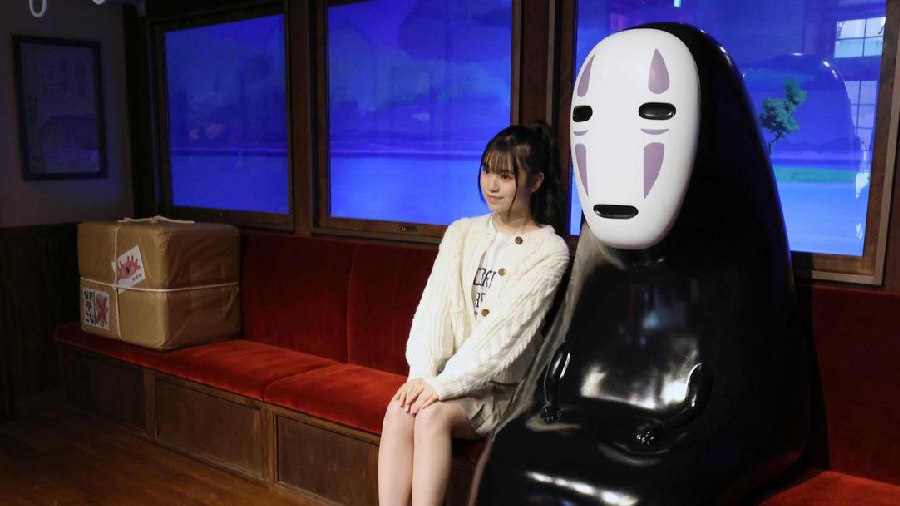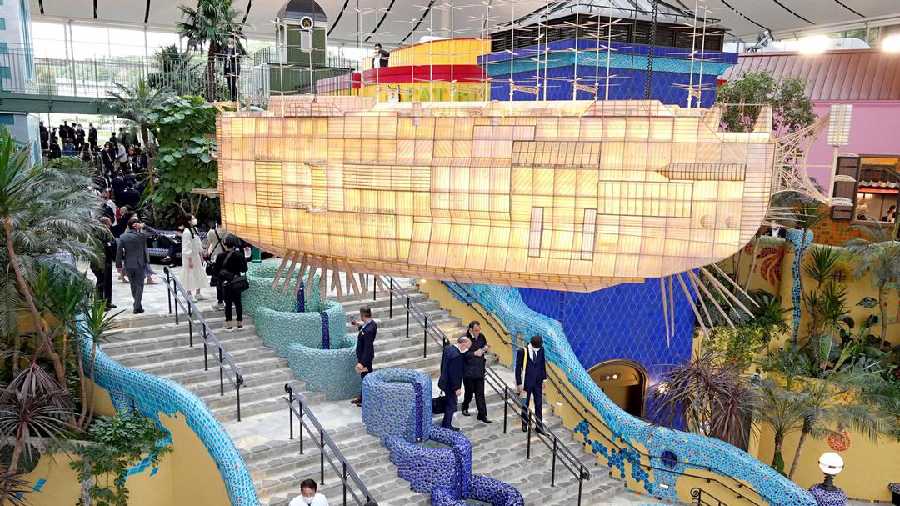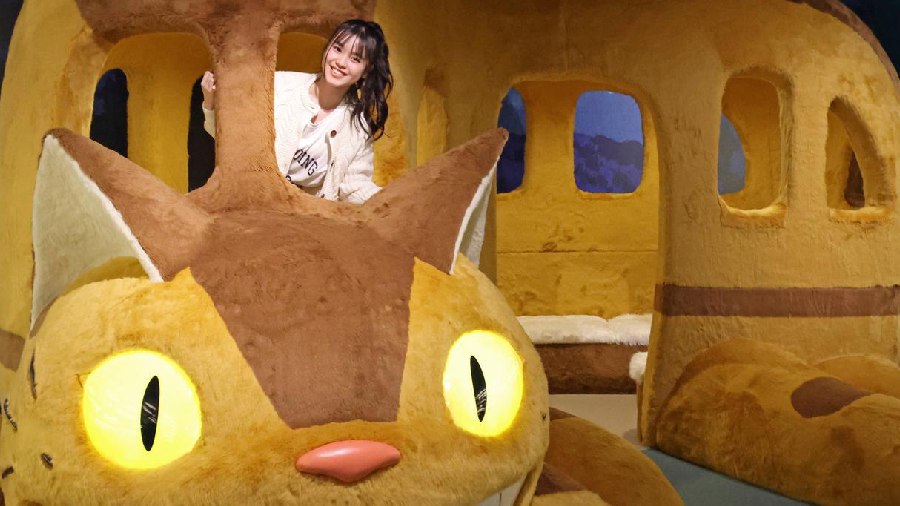Arriving at Ghibli Park, located about an hour by train from Nagoya, some 300 km (186 miles) from Tokyo, one is taken by surprise. At the north entrance gate, perched on a pillar is the figure of "Catbus" — a cat with a bus-like body that was an emblematic character of Studio Ghibli's 1988 film "My Neighbor Totoro."
Ghibli Park is nestled in a vast public space, the Moricoro Park, which boasts stately wooded hills. It is located in the city of Nagakute, in Aichi Prefecture, which was home to the 2005 World Expo.
Partially dormant since then, some pre-existing infrastructure, such as the large building at the park's entrance, has been repurposed by the Ghibli Park project that spans almost seven hectares (17 acres) out of the almost 200 hectares that make up Moricoro Park.
The theme park is divided into five areas: Hill of Youth, Ghibli's Grand Warehouse, Dondoko Forest, Mononoke's Village and the Valley of Witches — all of which are inspired by the studio's most famous films. For now, the first three spaces are open to the public while the latter two will open next year.
A sustainable approach
The unique approach to the park's design reflects Studio Ghibli principles, as nature and ecology play an essential role in its movies — thereby breaking with major theme parks like Tokyo Disneyland or those of Universal Studios.
In designing the space it was ensured that "trees shouldn't be cut down or changes made to the environment."
There are no rides or attractions here. The place is meant to be "a hybrid place, between a park and a museum," said Goro Miyazaki, son of Japanese anime creator Hayao Miyazaki and co-founder of Studio Ghibli. He told the press that the park aimed "to preserve Ghibli's works for future generations so that they would not be forgotten."
The place, which cost 34 billion yen (€240 million; $241 million) to build — half the price of Super Nintendo World, the latest addition to the Universal Studios park in Osaka — invites visitors to immerse themselves into the studio's films through life-sized reconstructions of the most emblematic scenes from the world of Hayao Miyazaki and other Studio Ghibli filmmakers.
The approach attempts to capture a sense of realism of Ghibli's works that include their hit anime films like "My Neighbor Totoro" (1988), "Princess Mononoke' (1997) and the Oscar-winning "Spirited Away" (2001).
Ghibli's Grand Warehouse, the main building located in the middle of the park, contains an imaginary neighborhood, mixing architecture inspired by Hayao Miyazaki's films, some of them rich with Japanese culture, others with elements inspired by the creator's travels abroad.

A girl poses with the No-Face character from the film 'Spirited Away' Deutsche Welle
Life-size replicas recreate key moments of 13 Ghibli classics: the visitor is invited to sit, like Chihiro, the main protagonist of "Spirited Away," next to the No-Face lonely spirit from the film, or slip into the garden of "The Secret World of Arrietty." A few tiny "streets" away, fans get a glimpse behind the scenes of some films, in particular of the meal scenes that form an essential part of Ghibli's magical world.
A full immersion experience
One of the hallmarks of Studio Ghibli films is the attention to finer details. At the park, fans can enjoy a multitude of references to the films. For instance, the susuwatari, or the "soot sprites" that appear in the films "My Neighbor Totoro" and "Spirited Away," and the Kodama forest spirits featured in "Princess Mononoke" adorn walls and hang from branches respectively.
For the uninitiated, an in-house theater screens the studio's short films, thus offering the perfect opportunity to broaden one's knowledge of the magical Ghibli universe.
In the Dondoko Forest section from "My Neighbor Totoro," the entire house of Satsuki and Mei, the film's two main characters, has been painstakingly reconstructed down to the last detail.
In the "Hill of Youth" section, dedicated to the films "The Cat Returns" and "Whisper of the Heart," a recreated antique shop complete with real antique pieces, adding soul to the reconstruction.
Visitors can only access the park by reserving tickets online. The number of visitors is being limited to 5,000 people per day. Tickets are already sold out till the end of 2022, and online reservations from abroad are not expected to be open until early 2023.

The park provides an immersive experience for fans and the uninitiated alike Deutsche Welle











